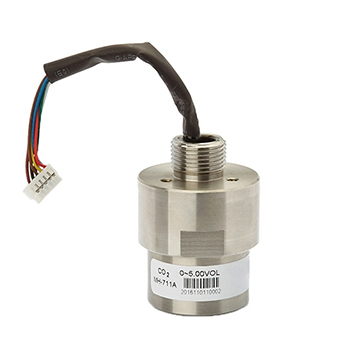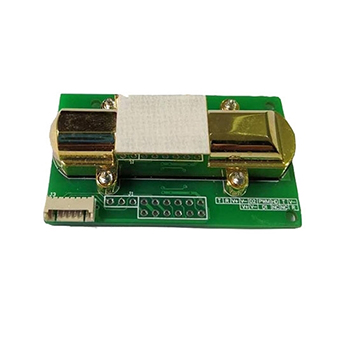How to Select CO2 Sensor?
As an instrument for detecting the concentration of carbon dioxide, carbon dioxide sensors are widely used in the living environment, plant cultivation, cultural relics, and archives protection. Next, ATO will take you to learn how to choose a suitable carbon dioxide sensor.
How to choose CO2 sensor?
Price
People often say a word, you get what you pay for. But if you also have the idea of "you should buy expensive things so  that the quality can be guaranteed" when choosing a carbon dioxide sensor, you may suffer a disadvantage. Although the price factor is an important reference item when choosing a sensor, it still depends on the application. You can choose within the scope of your own product demand, and you don't have to pursue the so-called "expensive ones are good".
that the quality can be guaranteed" when choosing a carbon dioxide sensor, you may suffer a disadvantage. Although the price factor is an important reference item when choosing a sensor, it still depends on the application. You can choose within the scope of your own product demand, and you don't have to pursue the so-called "expensive ones are good".
Range
The range of the sensor is also an important indicator when choosing, and it is not necessary to pursue a large range too much. The issue of range selection and price has the same purpose, that is to say, it is suitable for our own products. In a natural environment, the normal level of carbon dioxide in the air is 0.04% (400 ppm), and sometimes reaches 500 ppm in large cities. When there is no one in the room, the carbon dioxide concentration is generally around 500 to 700 ppm.
Generally speaking, when the indoor carbon dioxide content is above 5000 ppm, the functions of the human body will be seriously confused, causing people to lose consciousness and confusion. When detecting the concentration of carbon dioxide in the home environment, the sensor range of 0-5000 ppm is sufficient. In crowded environments such as public places and classrooms, the sensor range is 0-50000ppm. When choosing, as long as the sensor range can cover the carbon dioxide concentration in the used environment, it is not necessary to pursue an excessively large range.
Signal output
At present, the industrial NDIR CO2 sensor signal output methods include a serial port, analog quantity, GPRS, Ethernet, WI-FI, and other signal output methods. Different signal output methods require different installation methods. The signal output should not be simply divided by merits and demerits, but also depends on the environmental requirements of the design product solution.
Measurement accuracy
Accuracy has always been an important performance index of the sensor, and it is also an important link related to the measurement accuracy of the entire measurement system. The higher the accuracy of the sensor, the more expensive it is. Therefore, as long as the accuracy of the sensor meets the accuracy requirements of the entire measurement system, it is not necessary to choose too high.
Preheat time
Different types of sensors that detect different gases require different warm-up times. Some need a few minutes, while others only need a few seconds. The light source and detector in the infrared carbon dioxide sensor need to be energized to reach the best state to read the accurate value. Preheating is for the stability and accuracy of the sensor and has nothing to do with poor product performance.
Precautions for installation
After determining the approximate location of the sensors, the confined space, and how many sensors are needed, the next step is to determine where they will be installed. CO2 can be understood as flowing water, as the water fills the cup from the bottom up, as can CO2 in indoor spaces such as vented coolers, breweries, restaurants, and grow facilities. Carbon dioxide gas is heavier than normal air, which means it flows downstairs first or accumulates in low-lying areas. Therefore, the CO2 sensor unit should not be installed 12-18 inches (45-60 cm) above the floor.
The installation height of the NDIR CO2 gas sensor depends on the type of application being measured, monitoring the indoor air quality, and the density of the gas being measured relative to air. We should detect gases heavier than air at 6 inches from the ground, and gases lighter than air should be placed near the ceiling.
Because carbon dioxide has one carbon atom and two hydrogen atoms, its molecular weight of 44 g/mol means it is denser than oxygen, and carbon dioxide is heavier than air. At standard temperature and pressure, air has an overall density of 1.29 kg/m3, while carbon dioxide has a density of 1.79 kg/m3.
Since carbon dioxide is heavier than air, it usually collects near the floor and then fills the enclosed space, which is why it is recommended to place NDIR sensors within the "breathing zone" of 4-6 feet from the floor. This is because a carbon dioxide leak in a small room can quickly become life-threatening.
When it comes to measuring the indoor air quality of your home or office, the best location for the NDIR sensor is the same height on the wall where you mount the thermostat. When placing the sensor, make sure it is not near any doors or windows that could interfere with the readings. For locations where compressed CO2 is stored, captured, or produced, the CO2 sensor should be installed 16 inches from the floor because, as mentioned earlier, CO2 is heavier than air and can quickly fill an enclosed space, posing a health hazard.

